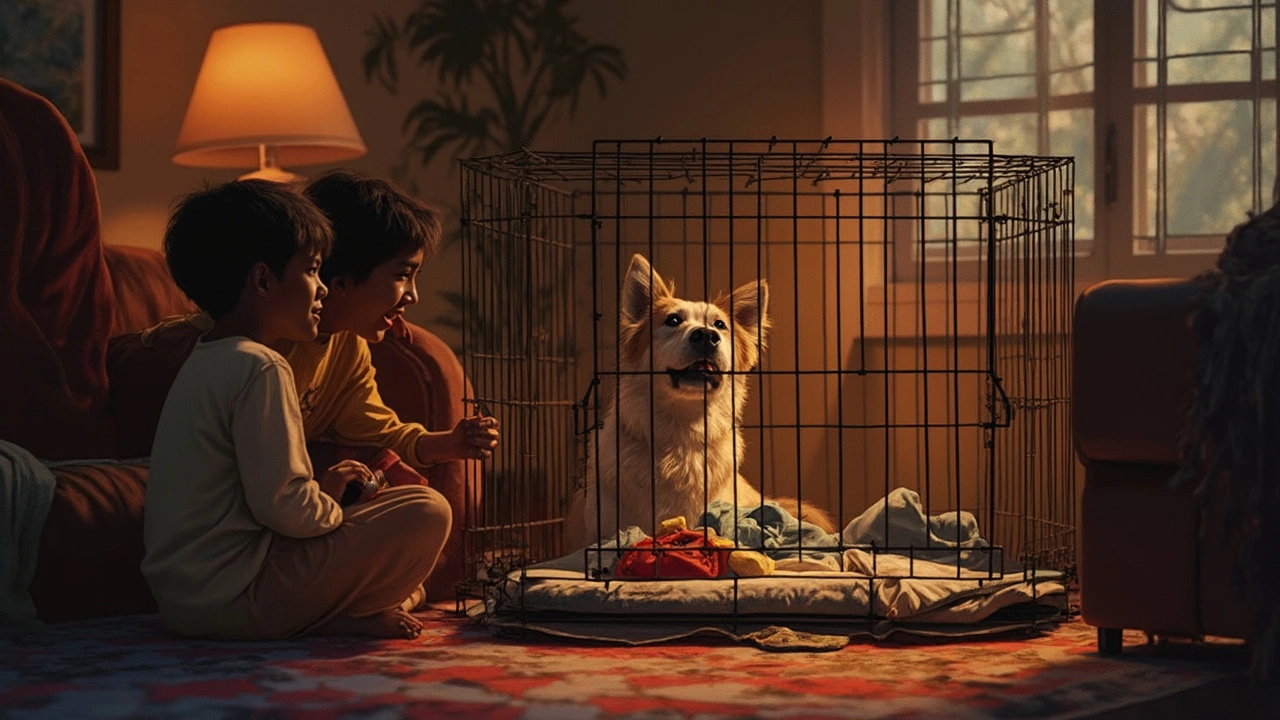Dog Crate Basics: How to Pick the Right Crate and Use It Right
A dog crate can be a safe den, a travel buddy, and a training tool all in one. If you’re new to crates, the idea might feel a bit scary—will your pup hate it? The good news is that most dogs learn to see a crate as a cozy spot when you set it up the right way.
First, think about size. Your dog should be able to turn around, lie down, and stretch a leg without feeling cramped. Too small and they’ll get anxious; too big and they’ll use one corner as a bathroom. Measure your dog from nose to tail and add a few inches for comfort.
Picking the Perfect Crate
There are three main types: wire, plastic, and soft fabric. Wire crates give good airflow and let you see your dog, which is handy for training. Plastic crates are sturdy, great for car trips, and often meet airline requirements. Soft crates are lightweight and work well for calm dogs in a quiet room, but they’re not ideal for chewers.
Look for a crate with a secure latch that’s easy for you but hard for your dog to open. If you travel a lot, check the crate’s weight and whether it folds flat. A removable floor pan makes cleaning a breeze, especially if accidents happen during the first few nights.
Budget matters, too. You don’t need the most expensive model to get a good crate. Mid‑range wire crates with a double‑door design give flexibility—you can place the crate against a wall and still have a side door for quick access.
Crate Training Tips That Actually Work
Start slow. Put the crate in a busy family area and leave the door open. Toss a few treats or a favorite toy inside and let your dog explore at their own pace. Never force them in; that creates fear.
Feed meals in the crate. Dogs quickly associate the crate with good things when they get dinner or a tasty snack inside. Gradually move the bowl further back until they’re eating fully inside.
Use a cue word like “crate” or “bed” each time you open the door. Consistent language helps your pup understand what’s expected.
Keep crate time short at first—five to ten minutes while you’re home. As they get comfortable, extend the periods. If you need to leave them alone, make sure they’ve had exercise, water, and a bathroom break beforehand.
Never use the crate as punishment. It should stay a positive, safe space. If your dog whines, wait a minute before opening the door to avoid rewarding the noise. Check for signs of distress; a little whimper is normal, but constant barking means the crate isn’t right for them yet.
For travel, place a familiar blanket inside and cover the crate partially to reduce visual stress. Arrive at the destination early, let the dog explore the new environment, then return the crate to its spot.
Lastly, keep the crate clean and dry. A fresh scent makes the space inviting, and a clean floor prevents skin irritation.
With the right size, type, and a gentle training plan, most dogs come to love their crate. It becomes a quiet retreat when you’re busy, a safe carrier for trips, and a helpful tool for house‑breaking. Ready to give your pup a happy home base? Pick a crate that fits, set it up with treats, and watch the confidence grow.

At What Age Should a Dog Not Sleep in a Crate? Key Signs and Tips
How long should your dog sleep in a crate? This article dives into the signs that your dog is outgrowing the crate, the best age to let them sleep outside, and practical steps for a smooth transition to a dog bed. You'll also find useful tips to keep your dog feeling safe and comfy and learn why timing matters for their well-being. If you're unsure when to say goodbye to the crate, this guide has your back.
read more
Should You Cover Your Dog's Crate with a Blanket at Night?
Wondering if covering your dog's crate at night is a good idea? This article delves into the pros and cons of using a blanket over the crate. Learn how it can create a cozy den-like environment, helping your pup feel secure. Discover the signs to watch for if your dog might not like it and the safety tips to keep in mind.
read more


